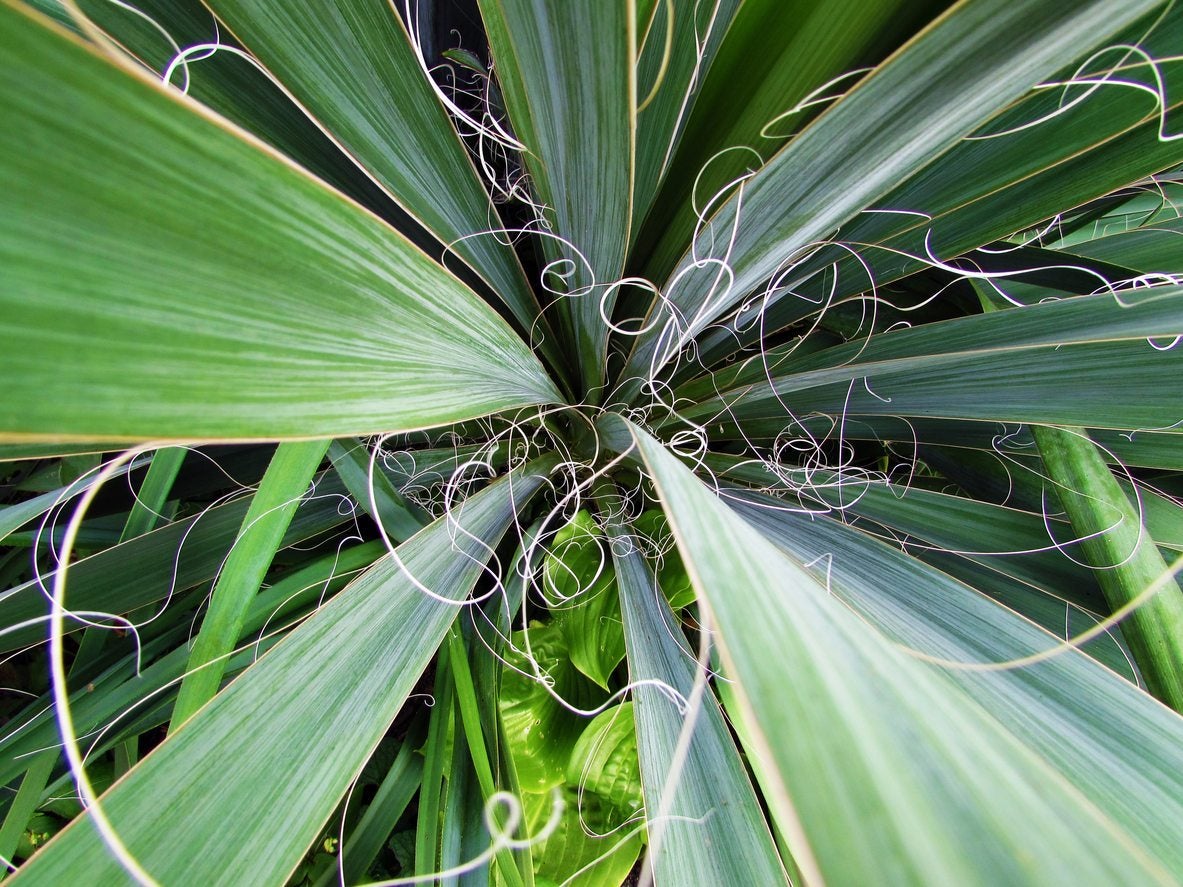Adam’s Needle Information – How To Grow An Adam’s Needle Yucca Plant


Adam’s needle yucca (Yucca filamentosa) is a plant in the agave family that is native to the Southeastern United States. It was an important plant to Native Americans who used its fibers for cord and cloth, and the roots as a shampoo.
Today, the plant is used primarily as an ornamental in the garden. Continue reading for more Adam’s needle information, as well as tips on growing Adam’s needle yucca plants.
Adam’s Needle Information
Adam’s needle plants are hardy in zones 4-10. They grow 3-4 feet (.91-1.2 m.) tall and wide. The common name Adam’s needle is derived from the plant’s long, sword-like foliage with sharp needle-like tips. These straps of foliage bear tiny thread-like filaments around their edges, which appear as if the plant is peeling.
In late spring, Adam’s needle yucca forms tall stalks from which 2-inch (5 cm.), bell shaped, white flowers hang. Because of these unique lantern-like flower stalks, Adam’s needle yucca is often used in the landscape as a specimen plant. The flowers last for several weeks.
The yucca flowers are only pollinated by the yucca moth. In a mutually beneficial relationship, the female yucca moth visits yucca flowers at night and collects pollen in specialized parts of her mouth. Once she has collected the necessary pollen, she lays her eggs near the ovary of the yucca flower then covers the eggs with the pollen she has collected, thereby fertilizing the plants egg. In this symbiotic relationship, the yucca gets pollinated and the yucca moth caterpillars use the yucca flowers as a host plant.
How to Grow an Adam’s Needle Yucca Plant
Yucca plants grow best in full sun and dry sites. While they are very tolerant of drought, sandy or compacted soil and salt spray, Adam’s needle yucca cannot tolerate wet or continually damp soils. The roots will rot in cool climates where they are exposed to extremely cold, wet springs.
When planting, be sure to allow at least two to three feet (.61-.91 m.) of space between your yucca and any other plants. Create a hole two times larger and deeper than the root ball, which should be planted level with the ground. Give it a deep watering.
Sign up for the Gardening Know How newsletter today and receive a free copy of our e-book "How to Grow Delicious Tomatoes".
In the landscape, they are used as specimen plants, borders, ground covers or for a xeriscape or fire-proof garden. In spring, before flower stalks appear, apply a slow release general purpose outdoor fertilizer.
Adam’s needle plants are available in variegated varieties. Variegated types may have streaks or striping of white, yellow or pink on their green foliage. After the plant blooms and fruits, the foliage dies back to the ground and can be carefully removed. New plants, then grow from the plant’s root.
Adam’s needle yucca plants are slow growing, but they can densely naturalize in an area if left unchecked.

Darcy is a former contributor to Gardening Know How. She is a professional landscape designer and gardening writer with experience in plant sales. An avid gardener, Darcy has a passion for sharing practical tips to help others grow.